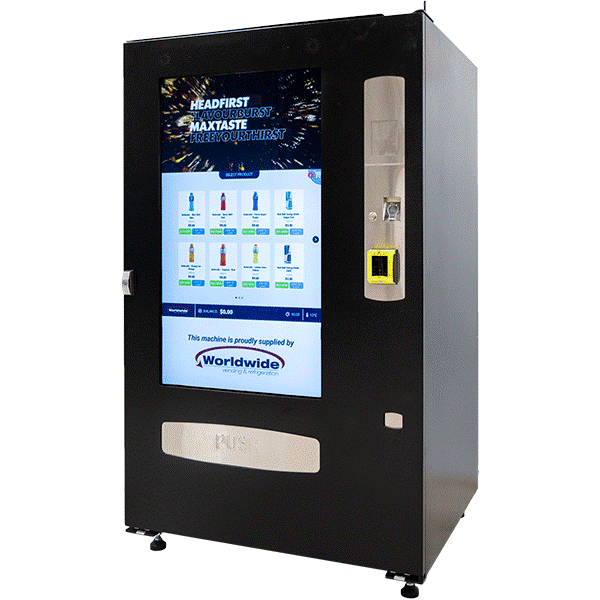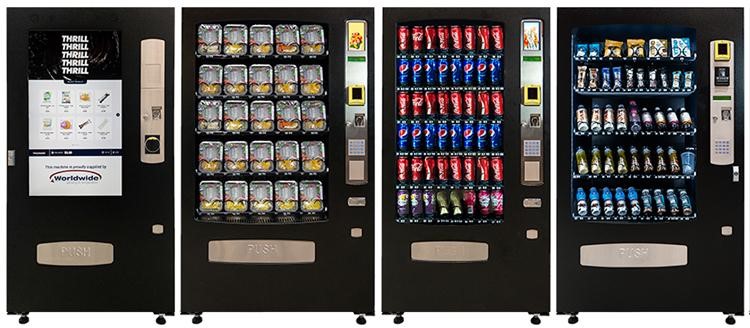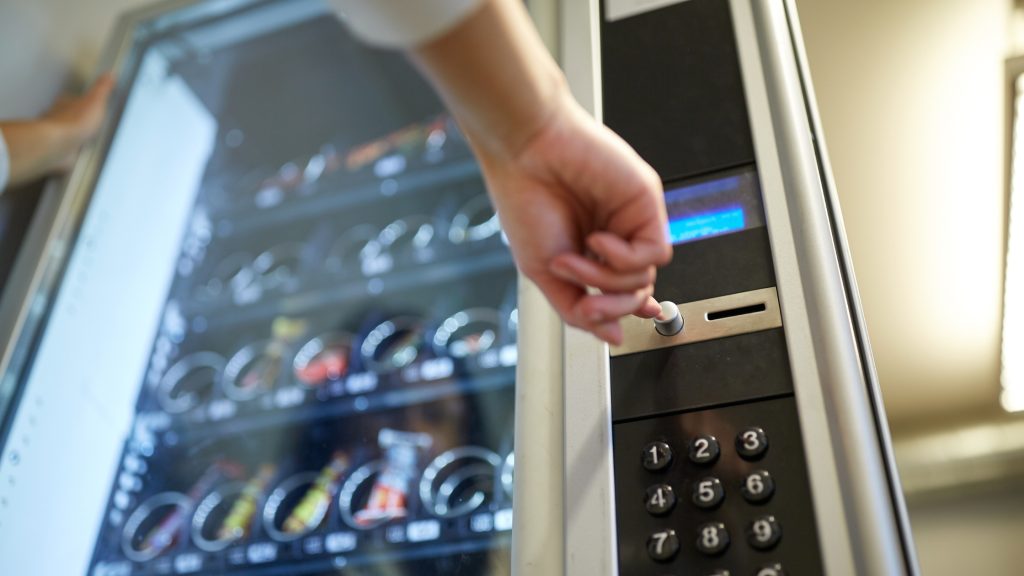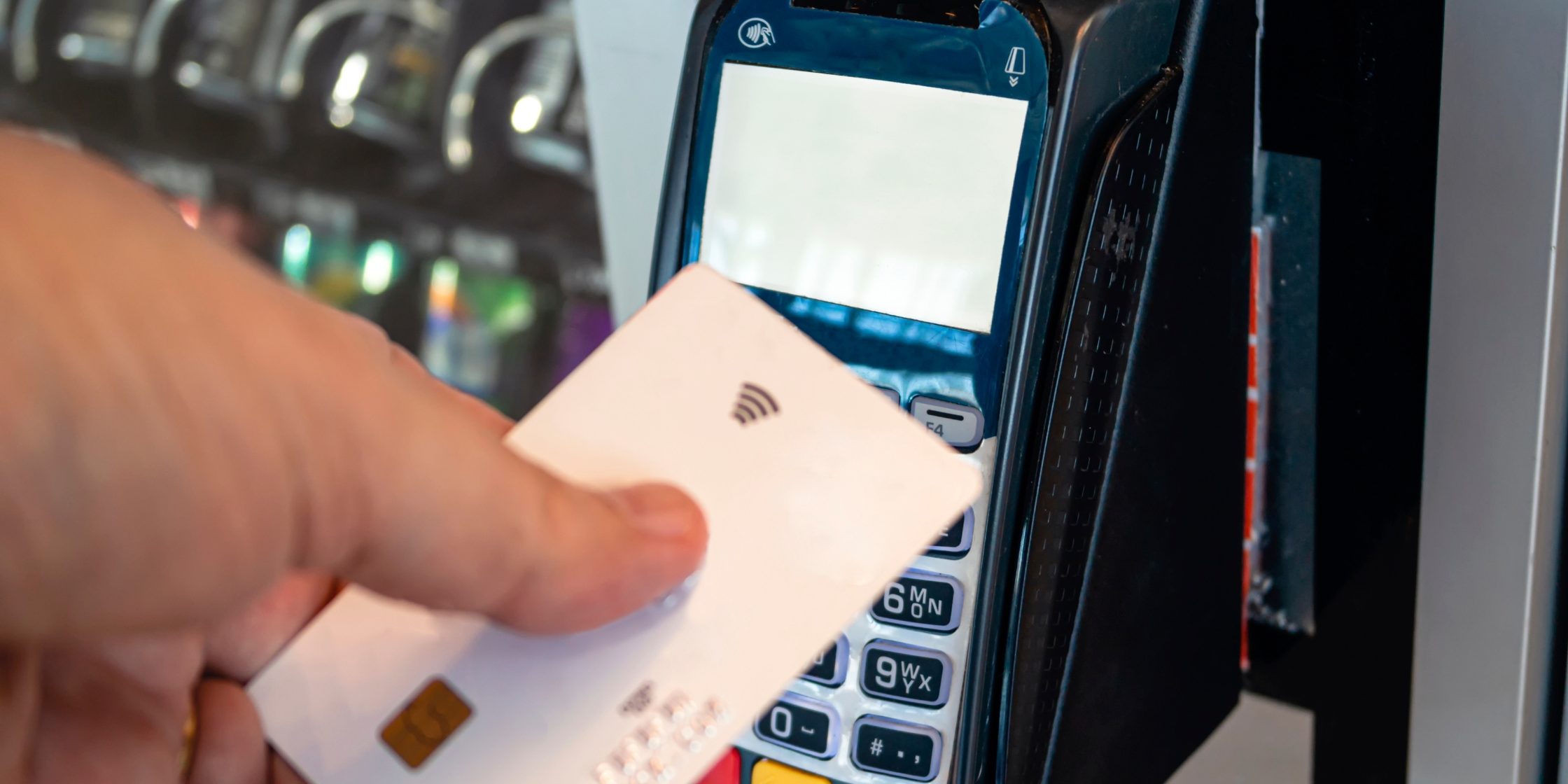The vending machine industry in Australia is worth hundreds of millions annually, with machines operating everywhere from gyms and schools to corporate offices and transport hubs. For entrepreneurs and side-business owners, vending machines offer an accessible, low-maintenance way to generate passive income.
But the big question remains: how much do vending machines make in Australia, and are vending machines profitable long term?
How Much Do Vending Machines Make?
Earnings vary widely depending on location, stock, and demand. Industry data suggests that a typical vending machine in Australia generates between $3,700 and $6,000 per year in net profit, though machines in prime spots such as universities or hospitals can earn significantly more.
The profitability of a vending machine business hinges on three key factors:
- Foot traffic – machines in busy public spaces consistently outperform those in low-traffic locations.
- Product selection – offering a balance of popular snacks, drinks, and healthier options increases sales.
- Stock management – regular restocking and maintenance prevents lost sales and keeps machines reliable.
This means there’s no fixed answer to “how much do vending machines make”, the real figure depends on operator effort and site quality.

Are Vending Machines Profitable in Australia?
Yes, vending machines are profitable in Australia, but only when approached strategically. They are attractive because they combine low overhead costs with the ability to scale easily. A single machine can deliver a few thousand dollars in profit each year, while operators with multiple machines across varied sites can multiply their income without multiplying their workload.
Profitability also comes from convenience: consumers are willing to pay for quick access to drinks and snacks when alternatives aren’t available. That’s why locations like gyms, schools, and workplaces are consistently strong performers in the Australian vending machine market.
Explore the Key Benefits of Owning a Vending Machine Business.
How Much Does a Vending Machine Cost in Australia?
The cost of a vending machine in Australia typically ranges from $2,000 to $10,000, depending on machine type, size, condition (new or second-hand) and features.
At Worldwide Vending, operators can choose from:
- Snack vending machines – stocked with chips, chocolates, and grab-and-go snacks.
- Drink vending machines – offering bottled water, soft drinks, and energy drinks.
- Combination vending machines – versatile models dispensing both snacks and drinks.
- Gym vending machines – tailored for fitness centres with protein snacks and sports drinks.
- Corporate vending machines – designed for workplaces, providing a balance of snacks and beverages.
- Frozen vending machines – manufactured to keep all items ice cold, perfect for ice creams and more.
Modern machines often include cashless payment systems and energy-efficient cooling, which improve customer experience and sales. Cashless vending machines are now considered essential, as more Australians prefer to pay with cards or smartphones.
In addition to the upfront investment, operators should factor in stock costs, electricity, and servicing. Maintenance fees range from $80 for routine cleaning to $1,500 for major repairs.
Read Our Guide on How Much Vending Machines Cost in Australia.

How Long Does a Vending Machine Take to Pay for Itself?
Most average vending machines take 12 to 18 months to pay for themselves, but this timeframe can be shorter in high-demand areas. A machine placed in a gym or university, for example, may recoup its initial cost within the first year. Machines in quieter locations can take much longer, or even fail to break even.
This is why a vending machine business plan is essential. By forecasting sales and mapping ROI, operators can reduce risk and position their machines for success.
What Type of Vending Machine Is Most Profitable?
The most profitable vending machine depends on the audience:
- Combination vending machines are often the best all-round choice, appealing to more customers with both snacks and drinks.
- Gym vending machines achieve strong returns thanks to demand for bottled water, protein snacks, and energy drinks.
- Drink-only machines perform best in transport hubs and hot climates.
- Snack vending machines are cost-effective for schools, offices, and entertainment venues.
Vending operators should match machine type to environment. For instance, a gym vending machine stocked with sports drinks will outperform a snack machine in the same setting.
What Are the Most Profitable Vending Machine Items?
Product choice is one of the biggest drivers of vending machine profit in Australia. Some consistently profitable items we’ve found include:
- Bottled water – low supply cost and steady demand.
- Energy drinks – high margins and strong sales in gyms and offices.
- Confectionery and chips – popular impulse purchases.
- Protein bars and healthy snacks – growing demand in schools and workplaces.
Successful vending machine business operators will always review sales data and rotate products to stay aligned with consumer preferences.

Do You Need a Permit for a Vending Machine in Australia?
In most cases, you don’t need a specific permit to run a vending machine business in Australia. However:
- Operators must obtain permission from property owners or landlords before installing machines.
- Some councils may require trading permits for vending machines in public spaces.
- All machines must meet Australian safety and electrical standards.
Checking with local councils and landlords is essential before setting up a machine.
Wrapping Up
So, how much do vending machines make in Australia? Data suggests the average machine generates $3,700–$6,000 in annual net profit, with higher returns possible in busy locations.
The vending machine industry offers a proven business model with low overheads and scalable potential. For those considering starting a vending machine business, success depends on choosing the right machine, securing high-traffic locations, and stocking products that match consumer demand.
Get Started Today
By working with a trusted supplier like Worldwide Vending, operators gain access to quality machines, technical support, and cashless payment systems, ensuring their vending machine business is set up for long-term profitability.
Explore our vending machines or Contact Us to take the first step toward building a profitable vending machine business today.






